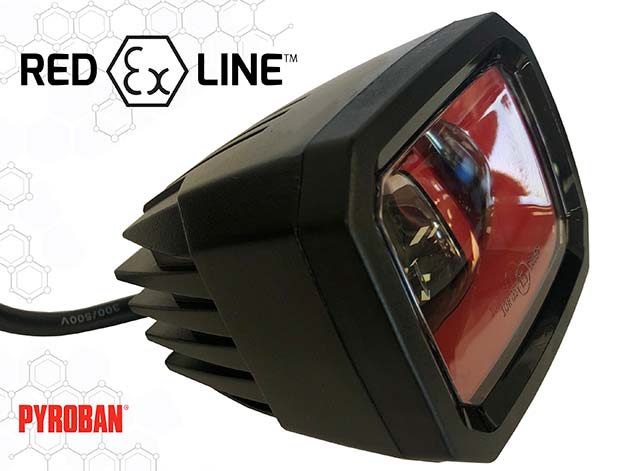It’s no surprise that many businesses recently experienced a level of downtime. For operations handling flammable materials with lift trucks, they face additional risk as their operations restart. Meanwhile, some also find themselves under financial pressure and must take special care when rolling on contracts or purchasing used ATEX lift trucks.

Materials Handling Sales Manager for Pyroban
Regardless, safety in potentially explosive atmospheres must remain the highest priority. We talk to Darren Boiling, Materials Handling Sales Manager for Pyroban to find out why.
Some manufacturing and logistics operations have been fully or partly shut down due to the events of recent months. Are there specific risks associated with this downtime?
Yes, absolutely. Reports indicate that in the chemical and petrochemical industries, for example, a large proportion of safety incidents occur during start-ups or shutdowns. That’s because operations restarting after idle periods are more susceptible to fire, explosion, or machinery breakdown.
For these operations, there will likely be thorough pre-start up plans and checks to minimise the risks, particularly of fire and explosion. However, even a simple warehouse storing chemicals or paint in sealed containers should have a pre-start plan and safety check too. Assuming those plans are in place, there may still be additional detail to consider when it comes to restarting operations which use ATEX lift trucks, or other ATEX compliant mobile equipment, in potentially explosive atmospheres.
It’s also important to remember that it’s not just forklifts, reach trucks and other MHE that are affected by explosion risks. Cranes, access platforms and scrubber driers used should also have the correct levels of protection.
If an operation is restarting, what steps should be taken to make sure it is safe to operate materials handling equipment in hazardous areas?
First and foremost, consider if the operation has changed at all and if the equipment is still fit for purpose. For example, are the trucks used in Zone 1, 2, 21 or 22 areas ATEX compliant with the correct specification? And are they still safe?
Also check whether the ATEX trucks are due their thorough examination and/or annual safety audit (Ex-ASA). In the UK, guidance from the British Industrial Truck Association (BITA), Fork Lift Truck Association (FLTA) and the Health and Safety Executive (HSE) during lockdown was clear that despite circumstances disrupting ‘normal’ operations, that “scheduled maintenance, repairs and statutory inspections must be considered essential ongoing activities.”
So, to ensure that trucks are properly protected when working in Zone 1, 2, 21 or 22, Ex-ASAs are still considered essential requirements before the equipment is put back into use and must not be delayed. A Pyroban Ex-ASA also supports compliance with the ATEX 2014/34/EU Directive through the EN60079-17 standard.
You mention ATEX zones. Are different solutions needed for safety in the different zones?
The most commonly requested conversion we do for our UK customers is applying our system6000 solution to support safety in Zone 2 hazardous areas. According to the ATEX definition, in Zone 2 hazardous areas, flammable atmospheres are not usually expected unless there is an unplanned spillage or release. For instance, where the seal on a container or drum in a warehouse or storage area has corroded over time. system6000 combines various explosion protection methods with active gas detection. The driver gets visual and audible warnings if gas or vapour is detected at 10% LEL (propane in air) prompting them to drive away from the area and raise an alert for investigation and clean up. If the gas or vapour levels rise to 25% LEL the truck will automatically be brought to a controlled stop preventing any potential explosions.
Many businesses wrongly believe that trucks with active gas detection ‘stop all the time’ but actually the truck will only stop if the level of gas detected indicates a very serious issue that the truck, and employees, should absolutely not be operating in.
There are also considerations for places near to these areas where explosive atmospheres may occur, but not in such quantities that would require full ATEX compliant Zone 2 solutions.
If a business handles flammable material and the area is not classified as a Zone 2 or Zone 1 ‘risk’, does it need to take action?
It comes back to prioritising people’s safety at all times. Standard, unprotected equipment in operations handling flammable material is both dangerous and unnecessary. Outside of zoned hazardous areas, there may still be a risk of explosion.
For many, safety has been front of mind in recent months, so we have seen great demand for our Gascheka Zone 3™ gas detection system. This is an ideal solution in these cases, such as in areas just outside of Zone 2 or during maintenance, as it can be quickly fitted onsite to any LPG, electric or IC powered equipment.
Aside from explosion protection, forklift OEMs and dealers typically offer various add-ons and assistive technologies to help support safety. Is it safe to use these with Ex-equipment?
Only competent engineers should make changes or installations to an Ex-forklift to preserve the integrity of its safety systems – it only takes one spark from something like a light that has been added to the truck to cause a potentially catastrophic explosion.
That’s one of the reasons why we have recently introduced Blue EX Spot™ and Red EX Line™ lights, specifically designed for ATEX compliant lift trucks operating in Zone 1, 2, 21 and 22 hazardous areas.
Spillage or accidental release of flammable material may create an explosive atmosphere with the perfect stoichiometric mix. Blue EX Spot can help minimise some risks, particularly where pedestrians are working in close proximity to trucks handling flammable materials, or where multiple trucks are operating. Similarly, Red Ex Line helps minimise risks for all of those working in hazardous areas by providing a perimeter marking warning system around the truck. These solutions increase safety where visibility is poor, such as in warehouse aisles or at crossings where IBCs and drums containing flammable material are handled.
What about those opting for rental forklifts? Are the safety considerations different?
ATEX compliant lift trucks are available from many rental companies on a short-term basis and Pyroban can often provide fast conversions for stock equipment, particularly for Zone 2.
Even short-term hire equipment used in areas where explosive atmospheres may occur, but not in such quantities that would require full ATEX compliant Zone 2 (or Zone 1) solutions, should have some form of protection. Gascheka Zone 3 is a gas detection system that can be fitted quickly and easily removed again in these cases.
We are also seeing that some applications are choosing to roll on an existing ATEX forklift contract rather than updating their fleet. In these circumstances, it is vital to check when a safety audit was last conducted and conduct an Ex-ASA if it’s due. Failure to do so could have big implications for both safety and compliance.
 With businesses under financial pressure, there is currently a strong demand for used materials handling equipment. Are used ATEX lift trucks safe?
With businesses under financial pressure, there is currently a strong demand for used materials handling equipment. Are used ATEX lift trucks safe?
Pre-owned explosion proof lift trucks can be useful and affordable additions to potentially explosive operations. But measures must be taken to ensure that they are matched with the explosion risk and application usage, as well as that they are in safe working order.
For instance, has the truck been regularly maintained by a trained Pyroban engineer who used the correct parts and service regime? Was the truck’s safety system audited on an annual basis by a safety inspector? Businesses should insist that a safety audit such as Pyroban’s Ex-ASA is conducted, and any problems are rectified before the sale completes.
Pyroban




Comments are closed.